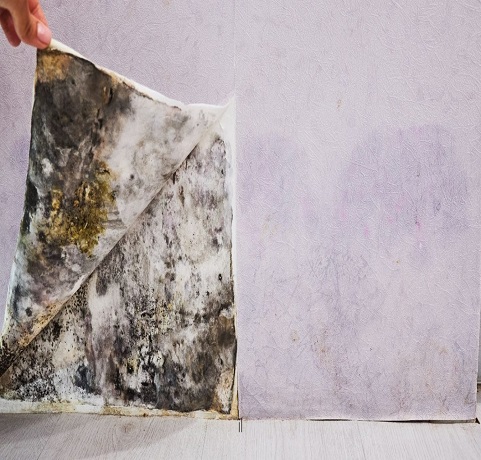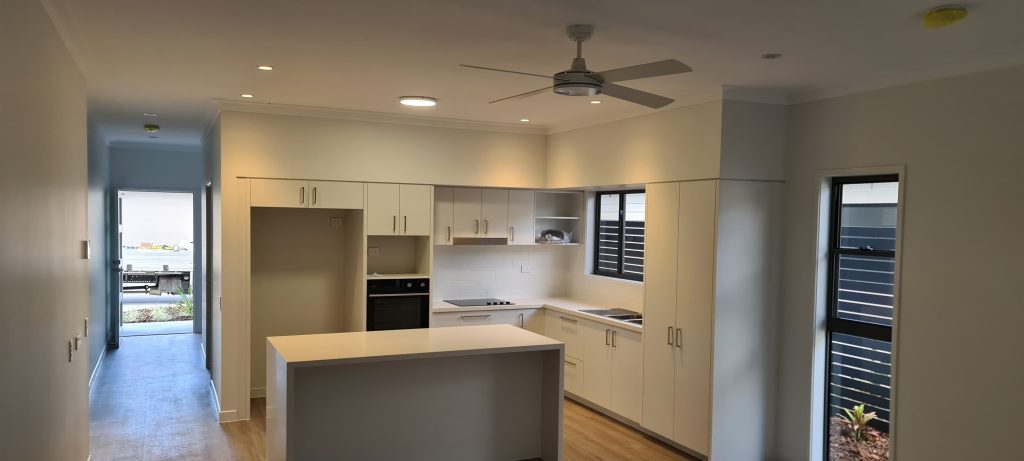Mould can proliferate quickly in your home after experiencing water damage, especially in areas with high humidity, inadequate ventilation, and limited sunlight exposure. This is a common problem affecting numerous Australian households, and if it goes untreated, it can lead to expensive repairs and serious health risks. By learning to recognize the early signs of mould growth, homeowners can take swift and effective action to reduce these dangers before they worsen. Being proactive in addressing mould can help safeguard your property and create a healthier living environment for you and your loved ones.
As we know, mould is an unwelcome guest in any home, posing significant health risks to all occupants, particularly those with pre-existing respiratory conditions. Mould spreads rapidly in conditions of excess moisture, making it vital to be aware of this threat. Understanding the speed at which mould can develop empowers homeowners to take preventive measures against potential water damage and its related complications, ultimately fostering a safer and healthier home environment.
This article aims to provide you with essential insights regarding the rapid growth of mould following a water-related incident. We will explore the underlying causes of this issue and outline the critical steps to take if you find yourself facing this difficult situation. Join us as we investigate the swift development of mould and the proactive measures you can take to address it efficiently!

Essential Steps to Identify Mould Infestation in Your Home
Mould is a type of fungus that can flourish in your home if preventative strategies are not enforced. It often presents itself as a slimy, unpleasant growth, typically appearing in various shades of green or black. These fungi thrive in moist environments, making areas that have endured water damage or those with elevated humidity levels particularly vulnerable to mould infestation. Early recognition of these conditions is vital for effective remediation efforts and can prevent extensive damage.
Several clear indicators suggest the presence of mould in your living space.
- A musty odour is among the most common signs of mould, indicating that it may be growing in unseen areas, requiring immediate attention!
- Discoloration on walls or flooring is another significant symptom. Mould often appears in irregular patterns and may be darker than the surrounding surfaces, signaling a need for further investigation.
- Keep an eye out for any warping or bubbling of paint or wallpaper, as this can indicate underlying water damage and the potential for mould growth.
If you notice any of these warning signs, it is crucial to seek professional assistance without delay. Experts can provide a thorough evaluation of the situation and offer guidance on managing any existing mould. Acting quickly can make a significant difference, as it is easier and more cost-effective to control mould growth when caught early rather than trying to eradicate it after it has established a stronghold in your home.
Understanding the Types of Water Damage That Encourage Mould Growth
While mould is a serious concern for homeowners, comprehending its root causes is key to effective prevention. By identifying the various sources of water damage that contribute to mould proliferation, you can take informed steps to protect your living environment and foster a healthy atmosphere for yourself and your loved ones.
Multiple factors contribute to mould growth following water damage. Even small leaks can create ideal conditions for mould spores to thrive and multiply. Areas with inadequate airflow or ventilation present heightened risks for mould proliferation, as stagnant air can trap moisture. Additionally, damp spaces such as crawl spaces or roof cavities with increased humidity levels are particularly susceptible to mould infestations, making regular inspections essential.
The good news is that you can implement straightforward yet effective measures to avert serious mould problems. Regularly monitoring your home for signs of moisture or water damage and maintaining low humidity levels can significantly decrease the risk of mould growth. Don’t wait for the situation to worsen—take proactive steps now to protect your family’s health and enjoy peace of mind in your home.
Investigating Conditions That Facilitate Rapid Mould Proliferation
Having established that water damage and specific environmental factors can trigger mould growth, let’s examine how quickly this process can unfold.
Under optimal conditions, mould can proliferate at an alarming pace. In fact, mould spores can colonize a damp surface within just 24 to 48 hours! This rapid growth can have severe implications for both your health and property, making it crucial to act swiftly and effectively.
So, what specific conditions contribute to this swift mould proliferation? Mould requires certain elements to thrive, including:
- Moisture: Mould flourishes in damp environments; thus, high humidity levels or wet surfaces create ideal conditions for its growth.
- Temperature: Most mould species thrive in warm temperatures, typically ranging from 16 °C to 27 °C, although some can even grow at lower temperatures.
- Nutrients: Mould relies on organic materials for survival—these can include wood, paper, drywall, and textiles commonly found in homes.
- Darkness: Mould can thrive in dark areas and does not require sunlight for growth, making poorly lit spaces particularly vulnerable.
- Airflow: Insufficient ventilation can lead to heightened moisture levels, fostering an environment conducive to mould growth.
- Time: Given the right conditions, mould can grow and spread rapidly, underscoring the importance of vigilance.
To effectively prevent mould growth, it is crucial to manage moisture levels in your home, ensure adequate ventilation, and enlist the expertise of skilled technicians to promptly address any instances of water damage or leaks.
Effective Strategies for Mould Remediation and Prevention
Now that we recognize the risks associated with mould growth, let’s delve into effective methods for managing and preventing it. The first essential step is to identify and remediate any water damage as thoroughly as possible. This includes repairing leaking pipes, ensuring that your gutters function correctly, and investigating any other potential sources of hidden moisture.
Once you've addressed these immediate concerns, consider investing in a whirlybird ventilation system or an air conditioning unit to maintain low humidity levels and deter future mould growth. This proactive measure can save you from costly repairs and health concerns down the road.
Additionally, keep a watchful eye on your home in the weeks following remediation. If you notice any early warning signs of mould re-emerging, do not hesitate to consult a professional for advice. The sooner you tackle potential issues, the better! Ultimately, preventing mould from developing in the first place is far more effective than dealing with its aftermath.

The Benefits of Professional Mould Inspection and Testing Services
If you are uncertain about the mould situation in your home, seeking professional assistance can provide invaluable peace of mind. Experts equipped with specialized knowledge and tools can swiftly identify hidden mould growth, allowing you to address potential concerns before they escalate into significant issues that could jeopardize your health and wellbeing.
If mould has already taken root, you need not worry—professional remediation services are available to help eliminate existing mould colonies. These qualified specialists utilize industrial-strength cleaners and advanced techniques to ensure your home is safe once again, alleviating concerns about long-term damage and health risks. Many companies even provide free estimates for their services, enabling you to avoid unexpected costs and feel confident in your decisions.
If you suspect mould may be lurking in your home, do not hesitate to seek professional help. Prompt action could save you money and create a healthier, stress-free environment for you and your family!
Expert Mould Remediation Services Offered by The Mould Removers
If you are grappling with a mould issue, it’s essential to avoid DIY methods. Instead, reach out to the skilled mould removal professionals at The Mould Removers. Their expertise in mould remediation guarantees not only effective removal but also ensures your safety throughout the entire process.
With their extensive knowledge and experience in mould removal services, you can rest assured that harmful mould colonies will not return anytime soon. Don’t hesitate—call now to address your mould concerns and reclaim the comfort and safety of your home!
The Article: Mould Growth Speed After Water Damage: What to Know first appeared on https://writebuff.com.
The Article Mould Growth Speed: Key Insights After Water Damage Was Found On https://limitsofstrategy.com


You’ve highlighted a crucial issue that many homeowners often underestimate until it’s too late. Mould, as you rightly pointed out, thrives in environments that many may not associate with risk—high humidity, poor ventilation, and minimal sunlight. In my own experience navigating a similarly humid Australian climate, I found that awareness doesn’t just mean recognizing the signs of mould, but also understanding how easily it could infiltrate our living spaces.